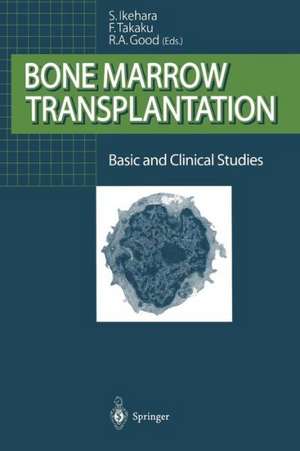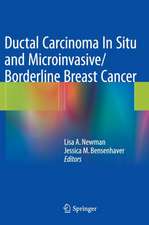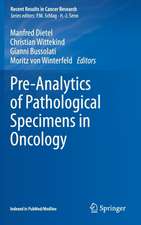Bone Marrow Transplantation: Basic and Clinical Studies
Editat de Susumu Ikehara, Fumimaro Takaku, Robert A. Gooden Limba Engleză Paperback – 17 apr 2012
| Toate formatele și edițiile | Preț | Express |
|---|---|---|
| Paperback (1) | 371.47 lei 6-8 săpt. | |
| Springer – 17 apr 2012 | 371.47 lei 6-8 săpt. | |
| Hardback (1) | 378.60 lei 6-8 săpt. | |
| Springer – 30 iun 1996 | 378.60 lei 6-8 săpt. |
Preț: 371.47 lei
Preț vechi: 391.02 lei
-5% Nou
Puncte Express: 557
Preț estimativ în valută:
71.09€ • 73.94$ • 58.69£
71.09€ • 73.94$ • 58.69£
Carte tipărită la comandă
Livrare economică 14-28 aprilie
Preluare comenzi: 021 569.72.76
Specificații
ISBN-13: 9784431683223
ISBN-10: 4431683224
Pagini: 348
Ilustrații: XIV, 331 p.
Dimensiuni: 155 x 235 x 18 mm
Greutate: 0.49 kg
Ediția:Softcover reprint of the original 1st ed. 1996
Editura: Springer
Colecția Springer
Locul publicării:Tokyo, Japan
ISBN-10: 4431683224
Pagini: 348
Ilustrații: XIV, 331 p.
Dimensiuni: 155 x 235 x 18 mm
Greutate: 0.49 kg
Ediția:Softcover reprint of the original 1st ed. 1996
Editura: Springer
Colecția Springer
Locul publicării:Tokyo, Japan
Public țintă
ResearchDescriere
In the last decade, remarkable advances have been made in bone marrow transplantation (BMT), which is now becoming a powerful tool in the treatment of diseases such as leukemia, aplastic anemia, and congenital immunodeficiency. In animal experiments, it has been found that BMT can be used to treat not only systemic autoimmune diseases but also organ-specific autoimmune diseases. In humans, it has recently been shown that rheumatoid arthritis, ulcerative colitis, and Crohn's disease can be successfully treated after BMT. This volume contains new information on how to prevent graft rejection, how T cell functions can be completely restored, and how concomitant BMT can prevent the rejection of organ allografts without the use of immunosuppressive agents. BMT will become an increasingly useful and powerful treatment for various currently intractable diseases, and this book will contribute by providing details of the latest research in the field.
Cuprins
Hematopoietic Stem Cells.- The use of embryonic stem cells to study hematopoietic development in mammals.- Development of blood cells from mouse embryonic stem cells in culture.- Stem cells for lymphocytes: comments on the time and place of commitment of precursors for the T lineage.- Effects of interleukin 12 on hematopoietic stem and progenitor cells.- Identification and characterization of a ligand for receptor protein-tyrosine kinase HTK expressed in hematopoietic cells.- Ex vivo expansion of human primitive hemopoietic progenitors.- Hemopoietic stem cell-stimulating ingredients in kampo (Japanese Herbal) medicine “Juzen-Taiho-To”.- Hematopoietic reconstitution after peripheral blood stem cell transplantation: effects of granulocyte colony-stimulating factor and progenitor cell dose.- Cord-placental blood banking.- Eosinophilic precursors in the fibroreticular network of human thymus.- Growth Factors and Their Receptors.- Biology of Flt3 ligand, a novel regulator of hematopoietic stem and progenitor cells.- Effects of recombinant human thrombopoietin (rhTPO) on thrombopoiesis in bone marrow-transplanted mice.- Physiological and pathological role of gp130, a common signal transducer for IL-6family of cytokines.- Roles of JAK kinases in human GM-CSF receptor.- TGF-ß receptors and signal transduction.- Anti-apoptotic role of protein-tyrosine kinases during granulocytic differentiation of HL-60 cells.- Fibronectin rescues bone marrow cells from apoptosis with IgG.- Cytokine gene expression in peripheral blood mononuclear cells after allogeneic blood stem cell transplantation.- In vivo effects of FLT-3 ligand in mice.- Gene Regulation and Gene Therapy.- Ribozyme-mediated reversal of human pancreatic carcinoma phenotype.- A gene therapy for pancreatic cancer.- Adoptive immunotherapy with cytokine gene-modified cytotoxic T lymphocytes.- Gene transfer to hematopoietic progenitor and stem cells: progress and problems.- Common marmoset as a new preclinical animal model for human gene therapy of hematological disorders.- Development of protein-liposome gene delivery system and its application for the treatment of acquired diseases.- Molecular cloning of a human DEXH box gene homologous to yeast SKI2.- Induction of immune response to lymphoid leukemia cells by M-CSF expression.- Effects of cytokines on the efficiency of gene transfer into murine hematopoietic progenitors.- Bone Marrow Transplantation.- Hematopoietic stem cell transplants from unrelated donors.- Transplantation with purified or unmanipulated mobilized blood stem cells in children.- Transplantation of ex-vivo expanded peripheral blood progenitor cells after high dose chemotherapy in cancer patients.- Graft versus host disease (GVHD) and cryoimmunology.- Transfer of autoimmune thyroiditis and resolution of palmoplantar pustular psoriasis following allogeneic bone marrow transplantation.- Acute graft versus host reaction (GVHR) against major/minor histocompatibility antigens.- Antileukemic effects of interleukin 2 after allogeneic bone marrow transplantation in AKR/J mice.- Detection of minimal residual disease by immunoglobulin heavy chain gene rearrangement analysis in patients with B-ALL after bone marrow transplantation.- Marrow transplantation and stem cell transplantation in 1996 — the developmental perspective —.- The prospects for BMT — from mouse to human —.















